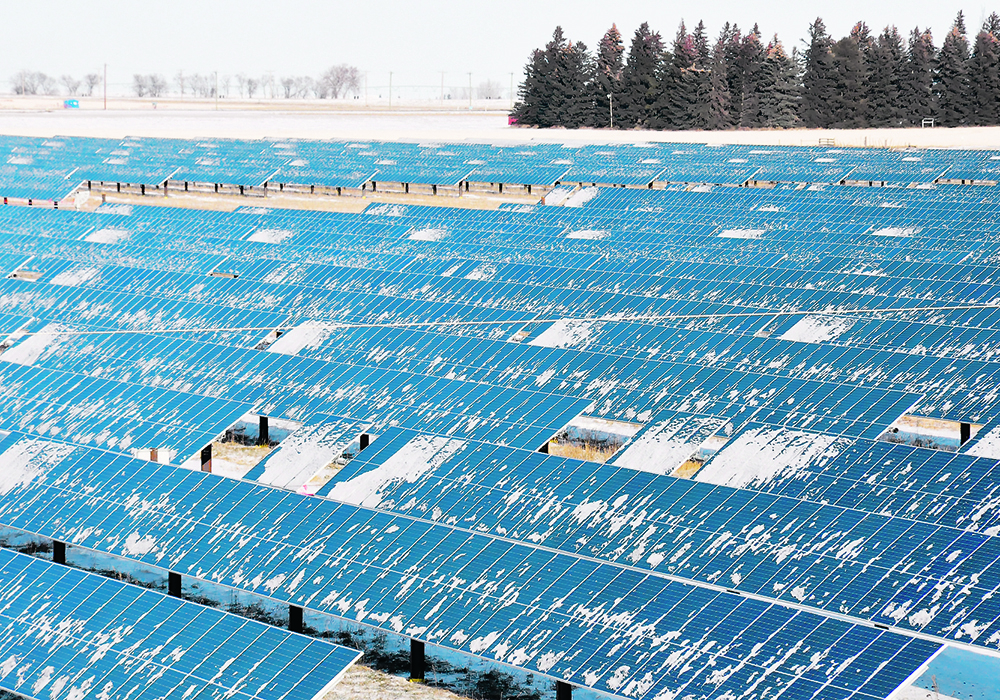Renewable energy is a tremendous economic opportunity for any community with the foresight to embrace it. The capital cost of building wind and solar infrastructure continues to fall as demand grows exponentially around the world. At the same time, performance improvements will continue to increase the efficiency of generating electricity from renewable energy assets.
In Canada, when the much-promised carbon capture and storage (CCS) infrastructure is added to fossil-fuel-based power plants, both capital and operating costs will increase for these energy systems. As a result, wind and solar energy will have an even greater competitive advantage.
Read Also

Kochia has become a significant problem for Prairie farmers
As you travel through southern Saskatchewan and Alberta, particularly in areas challenged by dry growing conditions, the magnitude of the kochia problem is easy to see.
The intermittent nature of the sun and wind is complementary to existing base-load fossil fuel generation and has been steadily increasing without any impact on electrical system reliability. One way to bridge gaps in renewable supply is with energy storage solutions, also known as grid batteries. This is relatively new technology, but costs are rapidly declining while performance is steadily improving.
In the southeast corner of Alberta, a small solar project was recently completed near Chappice Lake. The 14-megawatt (MW) solar farm also included 8.9 MW hours (MWh) of energy storage, which provides additional generating capacity when the sun goes down.
The project is a partnership between Elemental Energy from Vancouver and the Cold Lake First Nations in northern Alberta. Elemental’s director of project development, Dan Eaton, explained his company was discussing potential opportunities with Cold Lake leadership for years prior to the Chappice Lake project.
By incorporating energy storage, Elemental was able to build extra solar capacity on the site. The grid connection limit was about 14 MW, but Elemental installed 22 MW of solar-generating capacity to maximize the use of the leased land. Excess energy is stored in the grid battery. This stored energy can be sold at times when electricity generation is below the 14-MW limit. The grid battery also permits storing electricity when market prices are low and selling to the grid when prices are higher.
According to Eaton, the vanadium redox flow energy storage technology used in the Chappice Lake project was developed in Canada by Avalon Battery before the company merged with a U.K. firm to form Invinity Energy Systems. Avalon’s flow battery technology has significant advantages for grid applications over more commonly used lithium-ion grid batteries.
Flow batteries have an unlimited cycle life, allowing them to be charged and discharged every day over the lifespan of the power plant. Lithium-ion battery performance degrades as the cycle count increases and storage capacity will start to decline after a number of years.
Flow batteries also contain no flammable materials and can provide longer battery life simply by increasing the size of the tanks containing the liquefied storage medium.
Despite the recently announced moratorium on renewable energy projects in Alberta, Eaton was still optimistic about the future of renewables.
“Alberta is Canada’s energy heartland and energy development is at the core of the economy of Alberta. So you have a lot of knowledge and a lot of skilled people there. You have a lot of resources that have been developed in the past and we see renewable energy as rather complementary to Alberta’s existing energy assets.”
Southern Alberta has an exceptional amount of sun, wind and wide open spaces. The land is ideal for connecting large amounts of renewable capacity to the grid while consuming negligible amounts of agricultural land. But solar energy can also be built in smaller sizes and widely distributed to areas closer to where the energy is being consumed.
From residential solar systems to megawatt installations on shopping malls and parking garages, any individual, community or business can generate their own clean energy. This kind of distributed electricity system will reduce the province’s dependence on its fossil fuel generating capacity and render large investment in these assets economically unfeasible.
Robert Miller is a retired systems engineer, formerly with General Dynamics Canada, who volunteers with the Calgary Climate Hub and writes on behalf of Eco-Elders for Climate Action. He lives in Calgary.

















